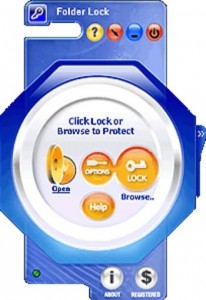
From Bare-Bones To Bells & Whistles
It is an inescapable fact that most things with lots of “gee whiz” features are either expensive or represent a compromise in quality somewhere. You cannot expect a midrange PC to have high-end internal workings and a bunch of external niceties, too.
A good way to determine what features may put your desktop out of reach is to run through the “Configure Your PC” process on a PC manufacturer’s Web site. You can add and drop features at will and get a good feel for how much they add to the cost of the computer. Below, we’ll outline key features to consider, followed by a listing of some solid desktop choices. Note that all the desktops in our article include Windows 7 unless you choose otherwise.
Power When You Need It
Processor power and system memory are two of the criteria that can separate low-to-midrange systems from their higher-end cousins. For standard business operations, a dual-core processor is sufficient. However, if you perform processor-intensive operations, such as video editing or advanced spreadsheet formula calculations, you might want a quad-core machine. For memory, look for at least 2GB of RAM, which will speed multi-tasking and complex processes. Memory is often inexpensive to upgrade. If you can afford to, move up to 4GB or 8GB of memory (assuming your system supports the higher capacities) for better performance.
The Data Store
One place you may not need to splurge is on data storage, unless you work with giant graphics or video files. Business documents tend to be small, so 500GB (or even 250GB) of storage space may well be sufficient. Often, higher-end machines may have big storage capacities, and this is a good place to trim the fat.
The exception to this rule is if you install and run multiple programs with big footprints. For this reason, if your PC will come preformatted into multiple virtual drives (such as C: and D:), make sure the C: drive has enough capacity for your programs.
The View Doesn’t Matter
You may not need a dedicated, high-end graphics card unless you work with graphics, video, or CAD (computer-aided design) programs or plan to use a mammoth monitor. Many business PCs come with what is called “integrated” graphics, meaning the graphics card is built into the motherboard.
High-end systems sometimes include expensive gaming-style cards that are overkill for many small businesses. If you think you will need a graphics card down the road for architectural drawings or marketing videos, it can cost less to purchase one now than to add one later via an expansion slot.
Room To Grow
Speaking of expansion slots, you don’t need a slew of them. One of the big differentiators between low-to-mid-priced PCs and their high-end brethren is power supplies. A basic power supply cannot drive a bunch of cards without overheating, so there is little need for multiple expansion slots. Provided you have USB ports to expand with external devices, a couple of extra slots—and maybe a second hard drive bay—is enough.
Necessary Add-Ons
Depending on how you use your PC, you may need a flash card reader, a sound card with audio in and out (microphone and speakers) and an Ethernet card for your wired network. Wireless chips—both Wi-Fi and Bluetooth—may be important, as well. It’s usually less expensive to get these things at the outset rather than pay for them to be added later. Beyond these peripherals, most add-ons are window dressing. Some businesses may have a use for touchscreen technology, but it is far from a “must-have” feature for many, at this point.
Author Bio:
This Article is written by Kashif Raza. Find uverse coupon code and coupon codes at connectionfly.
